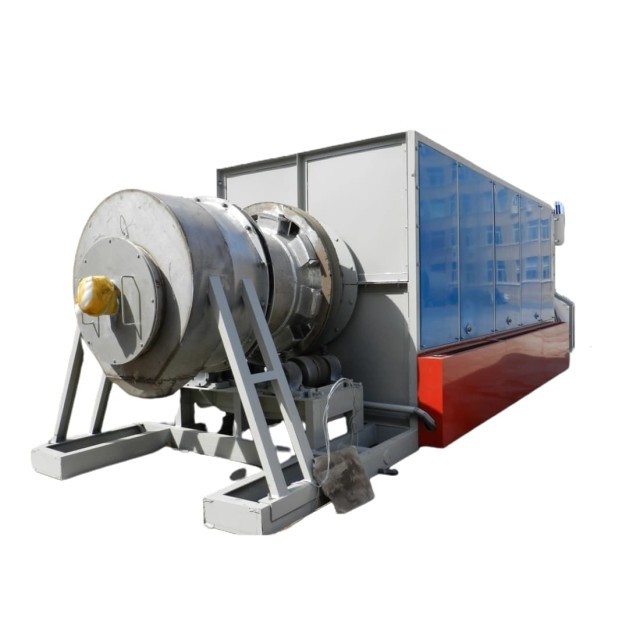
Electric Rotary Kiln
Electric Rotary Kiln Small Rotary Furnace for Activated Carbon Regeneration
Item Number : KT-CRF
Price varies based on specs and customizations
- Constant work temperature
- < 800℃
- Capacity
- 60~300 kg/h
- Rated power
- 63~305.5 kw
Shipping:
Contact us to get shipping details Enjoy On-time Dispatch Guarantee.
Why Choose Us
Reliable PartnerEasy ordering process, quality products, and dedicated support for your business success.
Product Showcase: Electric Activated Carbon Regeneration Furnace
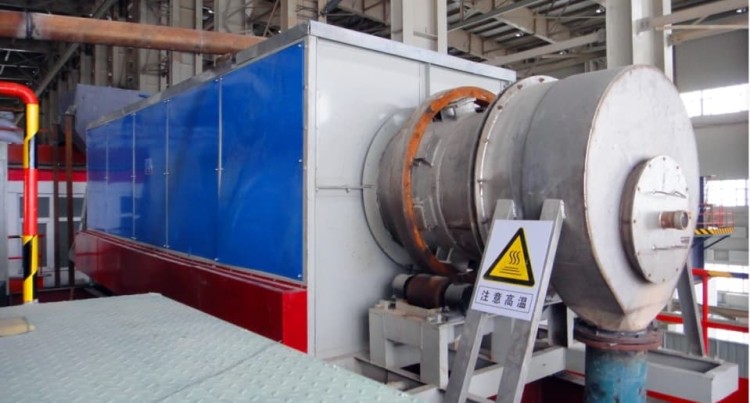
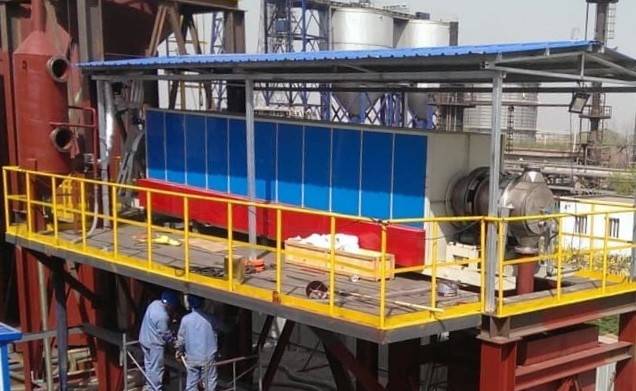
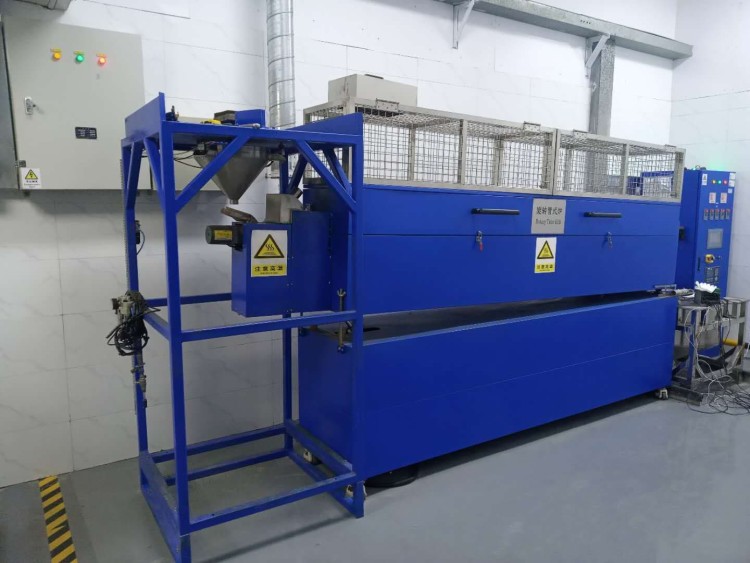
Efficiently Restore Your Activated Carbon with KINTEK's Advanced Furnace
The KINTEK Electric Activated Carbon Regeneration Furnace is a highly automated rotary kiln designed to effectively restore the adsorption performance of spent activated carbon. Leveraging our exceptional R&D and in-house manufacturing, KINTEK delivers this advanced high-temperature solution to enhance sustainability and reduce operational costs in your processes. This furnace is a testament to our commitment to providing top-tier equipment, part of our broader product line that includes Muffle, Tube, Rotary Furnaces, Vacuum & Atmosphere Furnaces, and CVD/PECVD/MPCVD Systems.
Our furnace ensures high recovery rates and minimal carbon loss, making it an indispensable tool for industries prioritizing efficiency and environmental responsibility.
Key Features & Advantages: Maximize Performance and Savings
KINTEK's Electric Activated Carbon Regeneration Furnace is engineered with features that translate directly into tangible benefits for your operations:
- Superior Regeneration Efficiency: Achieves a high recovery rate of iodine value. The use of an economical steam inert atmosphere promotes the development of activated carbon porosity, enhancing adsorption capacity and preventing carbon oxidization.
- Minimized Carbon Loss: Our scientific feeding and discharging system, combined with advanced dynamic sealing technology capable of bearing high positive pressure, significantly reduces carbon breakage and burn loss during production.
- Precision Control & Automation: Features high automation with adjustable feeding and rotary drum speeds. A high-accuracy PID intelligent thermal controller, coupled with a user-friendly touch screen interface, ensures precise temperature management across three independently controlled heating zones, optimizing the drying, calcining, and activating stages.
- Durable and Reliable Construction: Built with a nickel-based alloy furnace tube that resists high temperatures (up to 1100°C continuous working temperature) and corrosion without deformation. Superior quality Silicon Carbide (SiC) heating elements ensure a long service life and trouble-free maintenance.
- Energy and Cost Savings: An integrated energy-saving function automatically switches the furnace to stand-by mode, potentially saving up to 40% on energy. This also contributes to smokeless thermal efficiency and eliminates costs associated with fuel storage or transport.
- Robust System Components: The furnace comprises a feeding system, rotary kiln drum, robust drum support and drive system, efficient heating and insulation body, a discharging and dust collecting system, and a central control cabinet for seamless operation.
Operating Principle
Our Electric Activated Carbon Regeneration Furnace is an electric external heating rotary type. It utilizes a high-speed electric heating system to minimize furnace stopping and starting times. The core of the system involves the controlled heating of spent activated carbon within the rotary kiln drum. The touch screen control with intelligent PID thermal control technology allows for precise temperature regulation and monitoring throughout the regeneration process. The steam inert atmosphere plays a crucial role in preventing carbon oxidation and enhancing the regeneration quality, while advanced dynamic sealing technology maintains system integrity and prevents carbon burn loss.
Versatile Applications
This furnace is indispensable across various sectors for sustainable activated carbon management:
- Environmental Protection: Regeneration of activated carbon used in wastewater treatment, air purification, and soil remediation.
- Metallurgy: Removal of impurities from activated carbon used in metal processing and refining.
- Chemical Industry: Regeneration of activated carbon used in chemical production and purification processes.
- Medicine: Regeneration of activated carbon used in pharmaceutical manufacturing and medical applications.
- Food Industry: Regeneration of activated carbon used in food processing and beverage production.
Technical Specifications
| Constant work temperature | |
| Rotary drum speed | 0-5rpm |
| Rotary drum angle | 0-6 degree |
| Chamber insulation material | Polycrystalline ceramic fiber |
| Temperature controller | Touch screen PID controller |
| Heating element | Silicon Carbide (SiC) |
| Temperature sensor | Armed K type thermal couple |
| Electric power supply | AC220-440V,50/60HZ |
Standard Models
| Model | Capacity (kg/h) | Rated power (kw) | Dimension (m) |
| KT-CRF60 | 60 | 63 | 7.0*1.6*2.2 |
| KT-CRF100 | 100 | 103 | 7.0*1.6*2.2 |
| KT-CRF200 | 200 | 205.5 | 8.0*1.8*2.2 |
| KT-CRF300 | 300 | 305.5 | 8.0*1.8*2.2 |
Tailored Solutions & Expert Consultation
At KINTEK, we understand that standard solutions may not always fit unique requirements. Our strong deep customization capability allows us to tailor this Electric Activated Carbon Regeneration Furnace to your specific experimental or production needs. Whether you need modifications to capacity, dimensions, or control features, our team is ready to assist.
Ready to enhance your activated carbon regeneration process? Discuss your requirements with our experts or request a detailed quotation. Please fill out our Contact Form, and we will get back to you promptly to help you find the perfect furnace solution.
FAQ
What Are The Main Applications Of Electric Rotary Kilns?
What Is A Rotating Furnace Used For?
What Is The Principle Of A Rotary Furnace?
What Are The Main Applications Of A Rotary Tube Furnace?
What Are The Key Features Of Electric Rotary Kilns?
What Are The Main Types Of Rotating Furnaces Available?
What Are The Advantages Of Using A Rotary Furnace?
What Are The Key Features Of A Rotary Tube Furnace?
How Does An Electric Rotary Kiln Work?
How Does A Rotating Furnace Work?
What Are The Key Features Of A Rotary Furnace?
How Does A Rotary Tube Furnace Work?
What Are The Advantages Of Using An Electric Rotary Kiln?
What Are The Advantages Of Using A Rotating Furnace?
What Are The Common Applications Of A Rotary Furnace?
What Are The Advantages Of Using A Rotary Tube Furnace?
What Industries Benefit From Electric Rotary Kilns?
What Safety Features Are Included In Rotating Furnaces?
How Does A Rotary Furnace Handle Different Materials?
What Temperature Can A Rotary Tube Furnace Reach?
What Temperature Range Can Electric Rotary Kilns Achieve?
Can Rotating Furnaces Be Customized For Specific Applications?
What Types Of Materials Can Be Processed In A Rotary Tube Furnace?
How Does The Design Of An Electric Rotary Kiln Ensure Efficient Processing?
What Makes Electric Rotary Kilns More Energy-efficient Than Traditional Combustion Methods?
Can Electric Rotary Kilns Be Customized For Specific Applications?
How Do Electric Rotary Kilns Contribute To Environmental Sustainability?
4.8
out of
5
Incredibly efficient and easy to use! Perfect for our lab needs.
4.7
out of
5
Fast delivery and excellent quality. Worth every penny!
4.9
out of
5
This furnace is a game-changer for our carbon regeneration process.
4.6
out of
5
Durable and reliable. Highly recommend for industrial use.
4.9
out of
5
Top-notch technology and superb performance. Very impressed!
4.7
out of
5
Great value for money. Works flawlessly every time.
4.8
out of
5
Compact yet powerful. Perfect for small-scale operations.
4.7
out of
5
Quick setup and outstanding results. Very satisfied!
4.9
out of
5
The best investment we've made. Highly efficient and durable.
4.8
out of
5
Exceptional build quality and performance. A must-have!
4.7
out of
5
Superb technology and fast delivery. Couldn't be happier!
REQUEST A QUOTE
Our professional team will reply to you within one business day. Please feel free to contact us!
Related Products
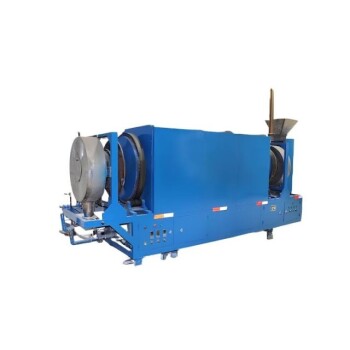
Electric Rotary Kiln Continuous Working Small Rotary Furnace Kiln for Pyrolysis Plant Heating
KINTEK's electric rotary furnaces offer precision heating up to 1100°C for calcination, drying, and pyrolysis. Durable, efficient, and customizable for labs and production. Explore models now!

Electric Rotary Kiln Small Rotary Furnace Biomass Pyrolysis Plant Rotating Furnace
KINTEK's Rotary Biomass Pyrolysis Furnace converts biomass to biochar, bio-oil, and syngas efficiently. Customizable for research or production. Get your solution now!
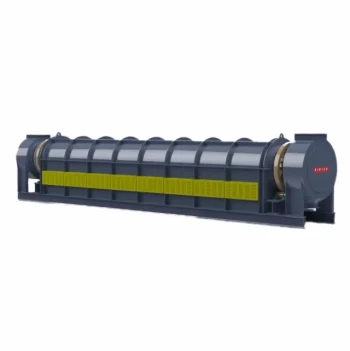
Electric Rotary Kiln Pyrolysis Furnace Plant Machine Small Rotary Kiln Calciner
KINTEK Electric Rotary Kiln: Precise 1100℃ calcination, pyrolysis & drying. Eco-friendly, multi-zone heating, customizable for lab & industrial needs.

Split Multi Heating Zone Rotary Tube Furnace Rotating Tube Furnace
Precision Split Multi Heating Zone Rotary Tube Furnace for high-temperature material processing, featuring adjustable tilt, 360° rotation, and customizable heating zones. Ideal for labs.
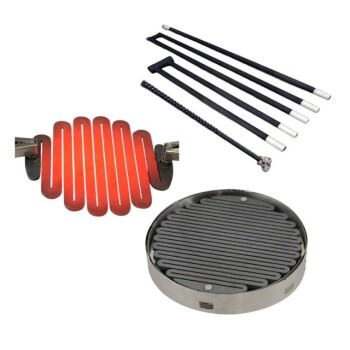
Silicon Carbide SiC Thermal Heating Elements for Electric Furnace
High-performance SiC heating elements for labs, offering 600-1600°C precision, energy efficiency, and long lifespan. Customizable solutions available.

CF KF Flange Vacuum Electrode Feedthrough Lead Sealing Assembly for Vacuum Systems
Reliable CF/KF flange vacuum electrode feedthrough for high-performance vacuum systems. Ensures superior sealing, conductivity & durability. Customizable options available.

Vacuum Hot Press Furnace Machine Heated Vacuum Press Tube Furnace
Discover KINTEK's advanced Vacuum Tube Hot Press Furnace for precise high-temperature sintering, hot pressing, and material bonding. Customizable solutions for labs.
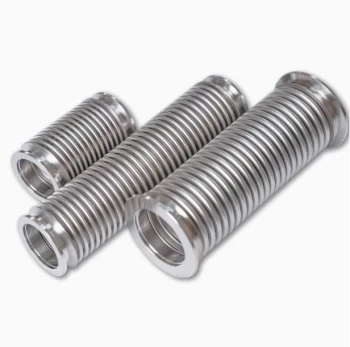
High Performance Vacuum Bellows for Efficient Connection and Stable Vacuum in Systems
KF ultra-high vacuum observation window with high borosilicate glass for clear viewing in demanding 10^-9 Torr environments. Durable 304 stainless steel flange.

High Pressure Laboratory Vacuum Tube Furnace Quartz Tubular Furnace
KINTEK High Pressure Tube Furnace: Precision heating up to 1100°C with 15Mpa pressure control. Ideal for sintering, crystal growth, and lab research. Customizable solutions available.

Laboratory Quartz Tube Furnace RTP Heating Tubular Furnace
KINTEK's RTP Rapid Heating Tube Furnace delivers precise temperature control, rapid heating up to 100°C/sec, and versatile atmosphere options for advanced lab applications.

Custom Made Versatile CVD Tube Furnace Chemical Vapor Deposition CVD Equipment Machine
KINTEK's CVD Tube Furnace offers precision temperature control up to 1600°C, ideal for thin film deposition. Customizable for research and industrial needs.

Multi Heating Zones CVD Tube Furnace Machine for Chemical Vapor Deposition Equipment
KINTEK's Multi-Zone CVD Tube Furnaces offer precision temperature control for advanced thin film deposition. Ideal for research and production, customizable for your lab needs.

Split Chamber CVD Tube Furnace with Vacuum Station CVD Machine
Split Chamber CVD Tube Furnace with Vacuum Station - High precision 1200°C lab furnace for advanced materials research. Customizable solutions available.

Vacuum Induction Melting Furnace and Arc Melting Furnace
Explore KINTEK's Vacuum Induction Melting Furnace for high-purity metal processing up to 2000℃. Customizable solutions for aerospace, alloys, and more. Contact us today!

1200℃ Split Tube Furnace Laboratory Quartz Tube Furnace with Quartz Tube
Discover KINTEK's 1200℃ Split Tube Furnace with quartz tube for precise high-temperature lab applications. Customizable, durable, and efficient. Get yours now!

Laboratory Muffle Oven Furnace with Bottom Lifting
Boost lab efficiency with KT-BL Bottom Lifting Furnace: precise 1600℃ control, superior uniformity, and enhanced productivity for material science and R&D.

1800℃ High Temperature Muffle Oven Furnace for Laboratory
KINTEK Muffle Furnaces: Precision 1800°C heating for labs. Energy-efficient, customizable, with PID control. Ideal for sintering, annealing, and research.

1400℃ Muffle Oven Furnace for Laboratory
KT-14M Muffle Furnace: Precision 1400°C heating with SiC elements, PID control, and energy-efficient design. Ideal for labs.
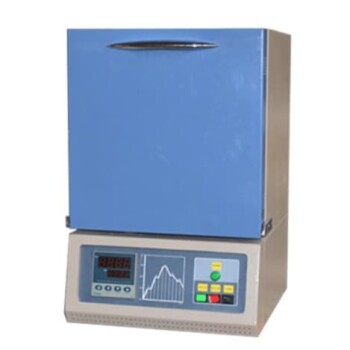
1200℃ Muffle Oven Furnace for Laboratory
KINTEK KT-12M Muffle Furnace: Precision 1200°C heating with PID control. Ideal for labs needing rapid, uniform heat. Explore models & customization options.